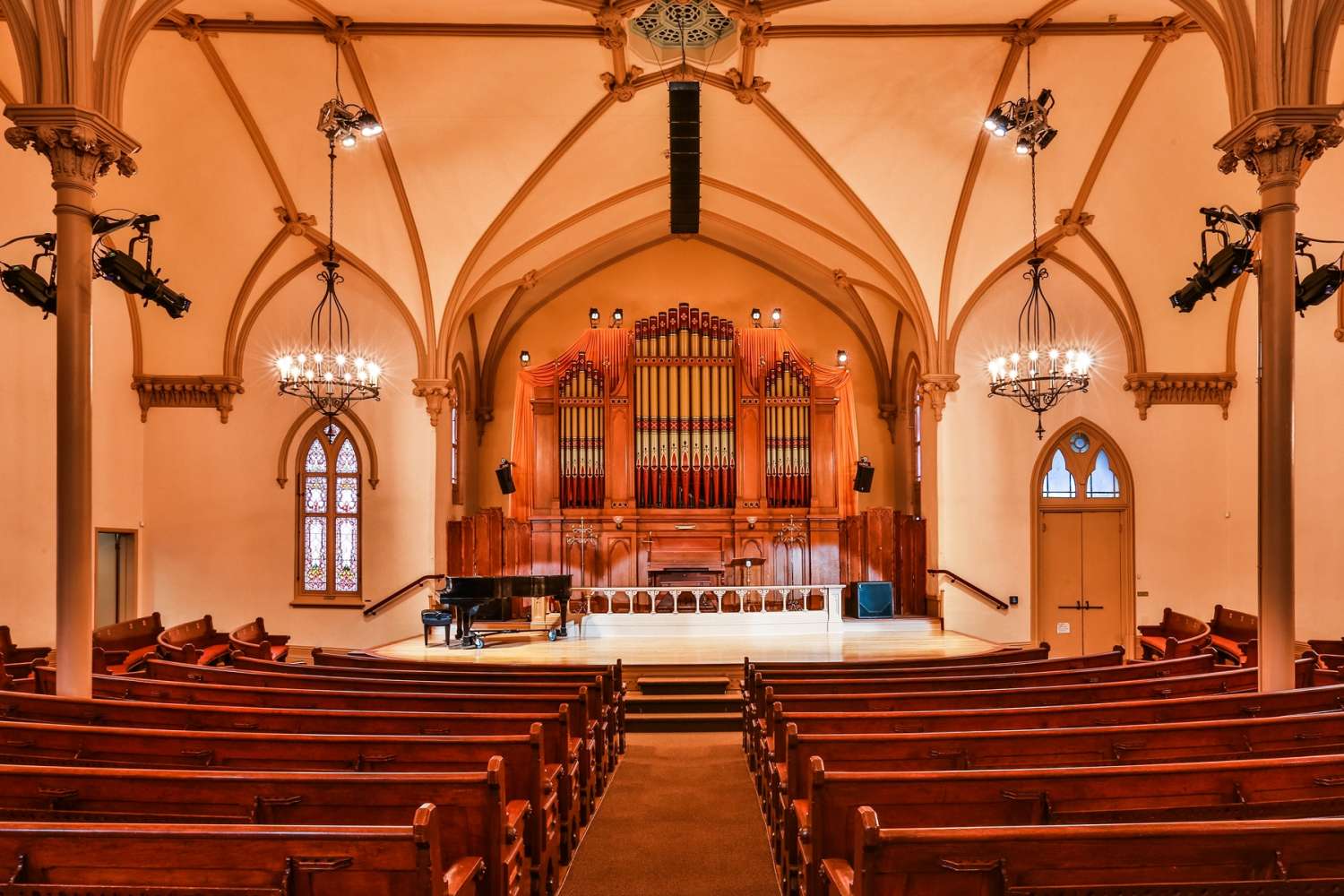High praise for Alcons in Portland
- Details

Originally built in 1882, a dwindling congregation meant that in 1967 an alternative use had to be found for the building or it faced demolition. A band of Portland citizens formed a non-profit organization to preserve the building and use it as a performance space to enhance the local community.
The Old Church is a contemporary, comfortable and accessible space, but the board of directors is always looking at ways to improve it. Recently they raised $272,000 with the aim of upgrading it to become a world-class concert hall. Gary Stokes of Stokes Sound - FOH engineer for kd lang and audio engineer for Queen and Adam Lambert - was brought in to assist a project which would include the installation of a permanent sound reinforcement system.
“Throughout its life, the building has been a favorite location for classic and acoustic music in Portland,” he says. “It never had a permanent sound reinforcement system before, the only systems used were portable, which were brought in if needed.”
In 1972 The Old Church was added to the National Register of Historic Places as an excellent example of Carpenter Gothic architecture. This, together with a recent internal restoration, made installing a permanent audio system a considerable challenge.
“There are a lot of limitations regarding what you can do. It has no proscenium, the weight limits for flying loudspeakers are extremely low, the acoustics are very reflective and, because of its historic nature, you cannot do anything to dampen the room. In addition, the audience is seated in a 260º arc around the stage, so installing a system without getting speakers in sight lines or throwing a lot of energy at the walls was extremely difficult,” says Gary.
Having used Alcons Audio’s pro-ribbon technology on the Jesse Cook US tour, it became increasingly clear to Gary that, as the process of looking at different systems progressed, an Alcons system would be the best solution to satisfy all of the venue’s needs.
The chosen solution was a mono central cluster of six LR7/120° and four LR7/90° micro line array modules, supplemented by fills of six compact versatile VR8 monitors and two mid-sized versatile VR12M monitors, plus a pair of BF181i mkII compact subwoofers. The system is powered by Sentinel3 and Sentinel10 amplified loudspeaker controllers, the ‘engines’ behind every Alcons system which are designed to get the maximum performance from the pro-ribbon systems.
“The system delivers greater advantages than you would get from a stereo system,” says Gary. “Using the 90º and 120º dispersion LR7s, the centre cluster covers 80% of the audience. Because it’s such a live space, towards the back the audience normally gets less direct and more reverberant energy. The Alcons centre cluster delivers more direct energy to the back of the room, meaning no need for delays. In addition, with the audience in a 260º arc, you would only give about 5% of them true stereo coverage anyway.”
The system has been such a success that it is now being used for some acoustic performances as well, as Gary explains. “It’s very subtle and controlled, which delivers a better listening experience for both audience and artist. The word is getting out that it's an amplified system which acoustic purists enjoy listening to.”
(Jim Evans)
















